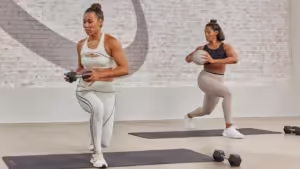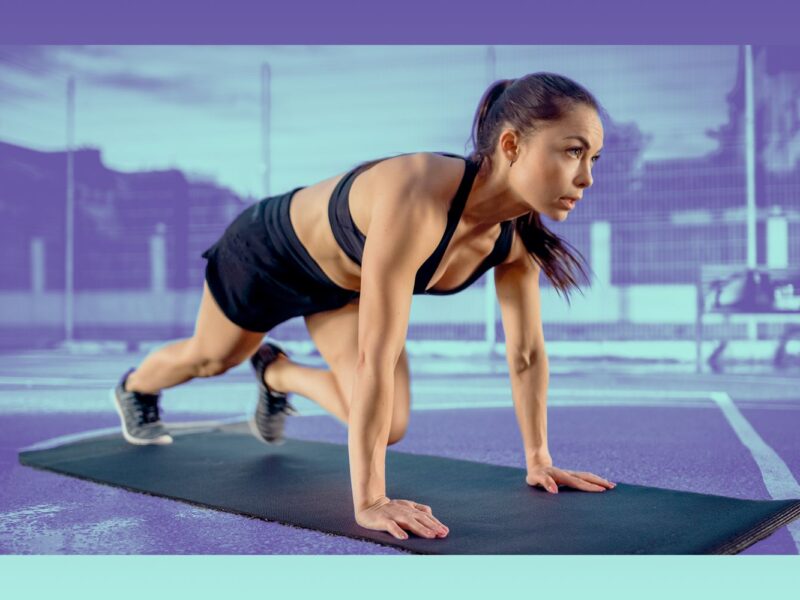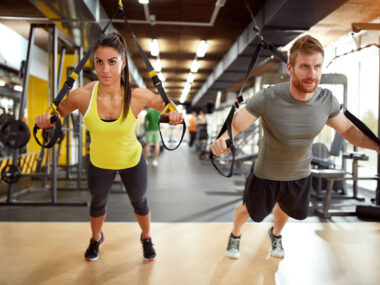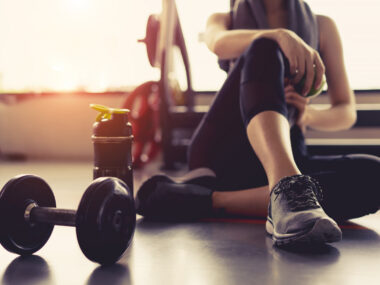Title: Functional Fitness: Training for Real-Life Movement Patterns and Activities
Introduction:
Functional fitness has gained popularity in recent years as a holistic approach to exercise that focuses on training movements and activities that mimic real-life tasks. Unlike traditional gym workouts that often isolate muscle groups and focus on aesthetics, functional fitness emphasizes functional movements that improve strength, mobility, stability, and coordination for everyday activities. In this comprehensive guide, we’ll explore the principles of functional fitness, discuss its benefits, provide practical examples of functional exercises, and offer tips for integrating functional training into your fitness routine.

Understanding Functional Fitness:
At its core, functional fitness is about training the body to perform movements and tasks that are practical and relevant to daily life. Rather than isolating individual muscles or using machines, functional fitness exercises engage multiple muscle groups and joints simultaneously, promoting full-body strength, mobility, and coordination. Functional movements typically involve pushing, pulling, squatting, bending, twisting, lifting, and carrying, all of which are fundamental to activities of daily living.
Key Principles of Functional Fitness:
Functional fitness is guided by several key principles that differentiate it from traditional gym-based workouts:
1. Movement Patterns: Functional exercises focus on natural movement patterns that replicate real-life activities, such as bending, lifting, pushing, pulling, and rotating.
2. Multi-Joint Movements: Functional exercises involve multiple joints and muscle groups working together in coordination to perform a task, rather than isolating individual muscles.
3. Stability and Mobility: Functional fitness emphasizes developing both stability (the ability to control movement and maintain proper alignment) and mobility (the ability to move freely and fluidly through a full range of motion).
4. Core Engagement: Core strength and stability are central to functional fitness, as the core muscles provide a stable foundation for all movement patterns and activities.
5. Balance and Coordination: Functional exercises often incorporate elements of balance and coordination to improve proprioception (awareness of body position) and spatial awareness.
6. Real-Life Application: The ultimate goal of functional fitness is to enhance performance and functionality in daily activities, sports, and recreational pursuits, rather than just aesthetics or strength gains.
Benefits of Functional Fitness:
Functional fitness offers a wide range of benefits for individuals of all ages and fitness levels:
1. Improved Functional Strength: Functional exercises build practical strength that translates directly to everyday tasks, such as lifting groceries, carrying children, or moving furniture.
2. Enhanced Mobility and Flexibility: Functional movements promote joint mobility and flexibility, reducing the risk of injury and improving overall range of motion.
3. Better Balance and Stability: Functional exercises challenge balance and stability, helping to prevent falls and improve proprioception and spatial awareness.
4. Increased Core Strength: Core stability is essential for maintaining proper posture, preventing low back pain, and transferring force between the upper and lower body during movement.
5. Greater Athletic Performance: Functional fitness can enhance athletic performance by improving agility, power, speed, and coordination, making it beneficial for athletes and sports enthusiasts.
6. Injury Prevention: By training movement patterns and addressing muscular imbalances, functional fitness can help prevent injuries related to repetitive movements, poor posture, and overuse.
Examples of Functional Exercises:
Functional exercises can be performed using bodyweight, resistance bands, free weights, kettlebells, medicine balls, and other functional training equipment. Here are some examples of functional exercises that target different movement patterns and muscle groups:
1. Squats: Squats are a functional lower body exercise that strengthens the quadriceps, hamstrings, glutes, and core muscles while mimicking the movement of sitting down and standing up.
2. Deadlifts: Deadlifts involve lifting a weight from the ground to a standing position, targeting the posterior chain muscles (lower back, glutes, and hamstrings) and improving hip hinge mechanics.
3. Lunges: Lunges are unilateral lower body exercises that improve balance, stability, and leg strength while replicating walking and stepping movements.
4. Push-Ups: Push-ups are a functional upper body exercise that strengthens the chest, shoulders, triceps, and core muscles, mimicking the pushing motion used in activities like pushing open doors or getting up from the ground.
5. Pull-Ups: Pull-ups engage the muscles of the back, arms, and core to pull the body upward, simulating the action of climbing, pulling, or lifting objects.
6. Planks: Planks are a core stability exercise that targets the abdominals, obliques, and deep core muscles, improving core strength and spinal alignment for better posture and injury prevention.
Integrating Functional Fitness Into Your Routine:
Incorporating functional fitness into your workout routine can be simple and effective with the following tips:
1. Start with the Basics: Begin by mastering fundamental movement patterns such as squats, lunges, hinges, pushes, pulls, and carries before progressing to more complex exercises.
2. Focus on Form: Pay close attention to proper technique and form to ensure safety and effectiveness. Start with bodyweight exercises and gradually add resistance as you become more proficient.
3. Mix It Up: Keep your workouts varied and dynamic by incorporating a mix of functional exercises, cardio, flexibility, and mobility drills to address all aspects of fitness.
4. Train Unilaterally: Include unilateral exercises (those that target one side of the body at a time) to address muscle imbalances, improve coordination, and prevent asymmetries.
5. Prioritize Stability: Incorporate balance and stability exercises into your routine to improve proprioception and reduce the risk of falls and injuries.
6. Listen to Your Body: Pay attention to how your body feels during and after exercise, and modify exercises or seek guidance from a qualified fitness professional if you experience pain or discomfort.
Conclusion:
Functional fitness offers a practical and effective approach to exercise that emphasizes real-life movement patterns and activities. By training functional movements, individuals can improve strength, mobility, stability, and coordination, leading to enhanced performance in daily activities, sports, and recreational pursuits. Whether you’re a beginner or seasoned athlete, incorporating functional exercises into your workout routine can help you build a strong, resilient body that’s capable of meeting the demands of everyday life. Embrace the principles of functional fitness, and enjoy the benefits of moving better, feeling stronger, and living life to the fullest.










